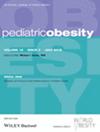South-to-South parental migration patterns and excess weight among children: Insights from a national cross-sectional study in Colombia
Abstract
Background
Evidence from Latin America suggests that children embedded in South-to-North migrant networks (i.e. relatives who live abroad, typically in the United States) are at increased risk of excess weight. It is unclear if the same findings apply to children embedded in Latin American intraregional migration or South-to-South migration networks.
Objective
To compare excess weight among Colombian children embedded in South-to-South migration networks (n = 334) to children with non-migrant parents (n = 4272) using Colombia's 2015 National Survey of the Nutritional Situation.
Methods
Prevalence ratios (PRs) for excess weight (BMI z-score ≥1) by parent migration history were estimated using weighted multivariable logistic regression adjusting for demographics, child behaviours, community and household indicators, including household food insecurity.
Results
Most migrant parents returned to Colombia from Venezuela (84%) and reported higher household food insecurity rates than non-migrant parents (59% versus 32%). Models excluding household food insecurity showed that excess weight among children with migrant parents was 51% lower (PR = 0.49; 95% CI 0.25, 0.98) than among children with non-migrant parents. After adjustment for household food insecurity, no statistically significant differences were found.
Conclusion
Colombian children with return migrant parents from Venezuela experienced less excess weight than children with non-migrant parents, but higher rates of food insecurity in migrant households might partially explain this difference. This study calls attention to two serious public health concerns for Colombian children—those who have excess weight and those who lack sufficient food, particularly among migrant returnees (a situation that may have worsened since the COVID-19 pandemic).

 求助内容:
求助内容: 应助结果提醒方式:
应助结果提醒方式:


